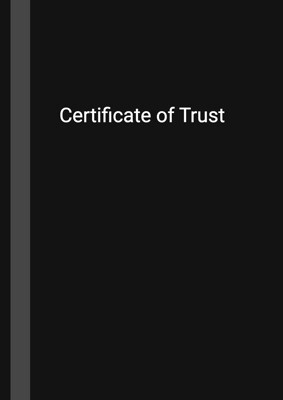How to Tailor the Document for Your Need?
01
Create Document
Fill in the details of the parties. You can click the "Fill with Member’s Information" button to complete it with information saved to your account.
02
Fill Information
Please fill in any additional information by following the step-by-step guide on the left hand side of the preview document and click the "Next" button.
03
Get Document
When you are done, click the "Get Document" button and you can download the document in Word or PDF format.
04
Review Document
Please get all parties to review the document carefully and make any final modifications to ensure that the details are correct before signing the document.
Document Preview
Document Description
Deed of Appointment, which is a legal instrument used to formalize the appointment of a new trustee to an existing trust scheme. Here’s an explanation of its significance:
Key Elements of the Document:
-
Parties Involved:
- Principal Employer: The primary entity responsible for the trust scheme.
- Continuing Trustee: The existing trustee(s) who manage the trust.
- New Trustee: The newly appointed trustee who will join the existing trustee(s) in managing the trust.
-
Date and Execution: The document is dated to mark its effective date, which is essential for legal and administrative purposes.
-
Principal Employer's Authority:
- The document outlines the Principal Employer's authority to appoint new trustees, referencing specific clauses in the original Deed and Rules of the trust scheme.
- It specifies whether the appointment requires the consent of the Continuing Trustees or if it can be done unilaterally by the Principal Employer.
-
Appointment and Acceptance:
- The Principal Employer officially appoints the New Trustee.
- Both the Continuing Trustee and the New Trustee accept the appointment.
- The Scheme Assets will be managed jointly by the Continuing Trustees and the New Trustee.
-
Legal Jurisdiction: The document specifies the governing law under which it is to be interpreted and enforced.
-
Execution and Counterparts:
- The document may be signed in multiple copies (counterparts), which together constitute one complete document.
- The authorized representatives of each party sign the document to make it legally binding.
-
Schedule of Deeds: A list of other relevant deeds related to the trust scheme is included in Schedule 1.
Importance of the Document:
- Legal Compliance: It ensures the appointment of the new trustee is conducted in accordance with the original trust deed and relevant legal requirements.
- Trust Management: The appointment of a new trustee is crucial for the ongoing management and administration of the trust scheme, ensuring that there are sufficient trustees to manage the trust's assets and obligations.
- Clarity and Record Keeping: The document provides a clear, formal record of the appointment, which is important for transparency, accountability, and future reference.
- Stakeholder Confidence: By formalizing the process, it maintains the confidence of beneficiaries and other stakeholders in the proper governance and administration of the trust scheme.
In summary, this Deed of Appointment is a vital document that formalizes the addition of a new trustee to a trust scheme, ensuring proper governance, compliance with legal standards, and continuity in the management of the trust’s assets.
How to use this document?
1. Review the document: Familiarize yourself with the Deed of Appointment of New Trustee and understand its purpose and significance.
2. Identify the parties: Determine the names and principal places of business of the Principal Employer, the Continuing Trustee, and the New Trustee.
3. Understand the background: Read the 'Whereas' section to understand the context and background of the document, including the Principal Employer's role, the Continuing Trustee's role, and the power to appoint new trustees.
4. Review the clauses: Study each clause of the document to understand the specific actions and agreements outlined, such as the appointment of the New Trustee and the vesting of scheme assets.
5. Consider execution options: Note that the appointment deed can be executed in multiple counterparts, and each counterpart is considered an original.
6. Determine governing laws: Be aware that the appointment deed is governed by the laws of the applicable jurisdiction.
7. Obtain authorized signatures: Ensure that the document is signed by the duly authorized representatives of the parties involved.
8. Review the schedule: Examine the schedule listing the deeds that are supplemental to the appointment deed.
9. Seek legal advice if necessary: If you have any doubts or questions regarding the document or its implications, consult with a legal professional.
10. Retain a copy: Keep a copy of the executed appointment deed for your records and future reference.
Not the right document?
Don’t worry, we have thousands of documents for you to choose from:












